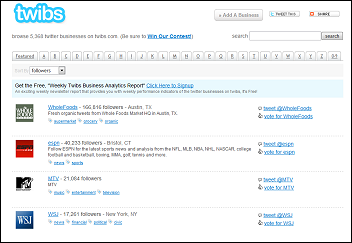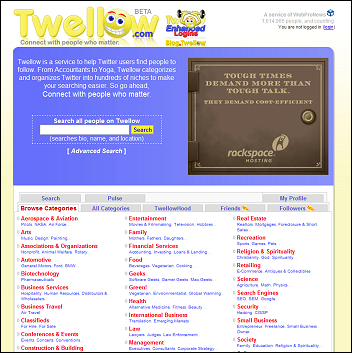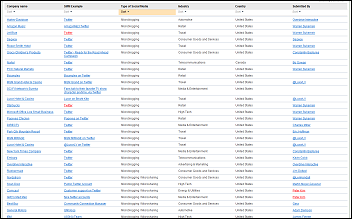SES New York kicked off with an excellent keynote presentation by
David Meerman Scott (interview) followed by a panel on Digital Asset Optimization including Mark Knowles, Chris Boggs and myself. Richard Zwicky moderated.
The rising importance of optimizing one’s digital assets came out of Google and other search engines’ decision to start including information and file types from other sources than their main search index. Some queries trigger search results that go beyond web pages, MS Office docs and PDF files to include sources such as images, blog posts, news, video thumbnails, books and shopping.
While many SEOs were responding to the changed landscape of the Search Engine Results Page (SERP) and optimizing for other file types, many others were already optimizing holistically under the premise of, “What can be searched on can be optimized“.
Most companies are not wired to create the variety of content that can achieve top visibility on search engines. In most cases, search engine optimization efforts are focused on content and digital assets that are currently in place. Being able to get more marketing impact out of existing content is as much a driver of
digital asset optimizationas it is a part of a holistic strategy that matches up with the opportunities presented by an ever changing search results page.
In the DAO session at SES New York I presented a historical perspective on digital asset optimization based on when TopRank started writing about it in 2007. I also talked about the changed search landscape that now includes personal, real-time, social and mobile search. I also discussed the following TopRank 10 Step DAO Content Strategy:
Search & Social Media Keyword Research
Anticipating demand via search is traditionally handled by keyword research tools such Google’s tools, Bing or services like Wordtracker and Keyword Discovery.
As advertising and media placements can drive search, so can social conversations. Social media monitoring tools can help marketers conduct social keyword research as a compliment to search engine based keyword research.
Find out what key language and key topics are being discussed on the social web and you’ll have invaluable insight into content ideas that can provide value for both social media marketing and search engine optimization.
Analyze Search Results Landscape
The output of Universal and real-time search results are not persistent. For example, a search for a particular phrase one day might yield news and image results and on another day display only web pages.
It’s useful to monitor the search results landscape for keyword phrases that you’re after. Understanding the mix of data sources besides the main search engine index can help with the allocation of optimization resources.
If news and real-time results are most common, it may make more sense to focus on content promotion there versus images or video.
Define Buyer Personas & Buying Cycle
Understanding the needs of your customer is marketing 101. Search marketers are becoming more sophisticated in their understanding of customer profiles and developing personas to represent who you’re trying to attract via search is an important step in a content strategy.
Knowing what kind of content and what type of digital asset your customers will best respond to can improve effectivness at driving traffic from the search visibility you’ve achieved through SEO.
The buying cycle is another dimension that warrants attention to make sure you’re creating, promoting and optimizing content that is relevant to where your customers are in their search/research process. Broad concepts usually represent early stages of research versus more specific phrases which often indicate a buyer is closer to purchase.
Inventory Existing Content & Assets
With a more holistic SEO effort, especially one that will incorporate digital assets, it’s important to have a baseline understanding of what you have to work with. Taking inventory of your content and digital assets is something we’ve been recommending for over 3 years and it’s an essential first step.
Having an understanding of current content and digital assets can also uncover content that is ripe for re-purposing. A common example is video that can be deconstructed into multiple, short form videos, single images, transcribed into text or splitting the audio off into a podcast.
Develop an Editorial Plan for New Content
Understanding your search and social media keywords, buyer personas and the assets you have to work with will help identify what new content you’ll need to create.
Adopting the perspective of a publisher, not just a marketer, will help resource allocation, planning and goals/measurement for content creation.
For example, rather than just sending out a press release and publishing a blog post with a new product announcement, a company might, based on search/social keyword research and an understanding of their buyer personas, decide to create a resource page for journalists that includes links to relevant resources, a standard press release, images, PowerPoint, video, past media coverage, executive interviews, audio snippets, demo and appropriate media relations contact info. It would be made easy to bookmark or share this resource page as well.
The assets being linked to from the resource page would be hosted either on the corporate site, optimized of course, or hosted on 3rd party media sharing sites such as Flicrk, YouTube, SlideShare, DocStoc, PRWeb and others.
This provides a richer experience as well as numerous options for interaction. It also offers multiple, potential entry points into the resource page via search, since the optimized digital assets can rank in search results on their own and link to the destination content on the corporate web site.
Map Keywords to Content & Digital Assets
The functional process of implementing search/social keyword research is to map those concepts to the content and assets you have. This helps manage the initial keyword optimization process.
Mapping keywords to the editorial plan is also a useful guide for the future creation and optimization of content. Not only are web pages, images, video and other assets optimized for search, but optimized for customers.
Operationalize Content & Digital Media Creation with SEO
SEO and digital asset optimization are not one-time events. Keyword demand will change and of course, new content and media will be published. To ensure keyword optimization of new content, it’s important to incorporate SEO with established content creation and promotion processes.
That might be updating the corporate styleguide with SEO and keyword usage rules or it might mean making programming changes to the web site’s content management system to prompt content creators with keyword cues when adding text or other media.
Develop Off Page Digital Assets
The beauty of social content is of course, that it’s social! Sharing should be easy and encouraged. Hosting some digital assets on social media sharing sites such as those mentioned above (Flickr, YouTube, Slideshare, DocStoc) can introduce your optimized content to new audiences and attract both traffic and links. More relevant links mean better search engine visibility and web site visitors.
Promote/Syndicate via Distribution Channels
How will anyone know you have excellent content and digital assets if you don’t promote? Dedicate a fixed and persistent effort to developing social networks where your customers and influentials spend their time on the social web. Do the same with social media sharing web sites so that when you post a new video on YouTube for example, your network there can be notified.
Developing distribution channels for content will significantly improve reach and the likelihood of your content being passed on, shared and made socially popular. Email newsletters, RSS, Ping.fm and TwitterFeed services are good examples of content distribution services that help promote content efficiently.
Ongoing Measurement with Web, Social and Search Analytics
Search marketing professionals are well aware of the value from web and search analytics that measure search visibility performance as well as web site interactions and conversions. The importance of social media monitoring and analytics is also essential for a DAO Content strategy.
On the front end, social media monitoring tools can help you identify conversations and influentials that are meaningful to the topics and customers your marketing efforts are trying to reach. Social keyword research can in part, be accomplished by some social media monitoring tools. Those same tools are essential for measuring the social impact of your digital asset and social media optimization efforts.
A simple cycle would be one where you’ve identified new keyword topics beginning to buzz on the social web and taking that cue to create content. Promote that content through your social networks and use social media monitoring to track the effects of your content contributions to the larger conversation on the topic. Use web analytics to measure any increase in search based traffic based on the growing popularity and awareness of the topic based in part, on your contributions and social interactions.
With an Optimized Content Strategy, there’s good news and bad news.
The good news is that by following these 10 steps, a significant impact can be achieved in overall authority for the topics and keyword concepts focused on as well as the ability to attract new business, media coverage and employees.
The bad news is that it’s not easy. Making the commitment to serving customers with content and media on an ongoing basis, indefinitely without the initial ability to forecast ROI will make many companies say, “Great idea and it makes sense, but not for us.”
However, those companies that make the effort to really understand and implement these fundamental concepts are making an investment with a payoff that is very long term and with momentum, very signifcant. Some companies will be able to “come out of nowhere” and dominate their category by following these 10 guidelines for an optimized content marketing strategy.


























